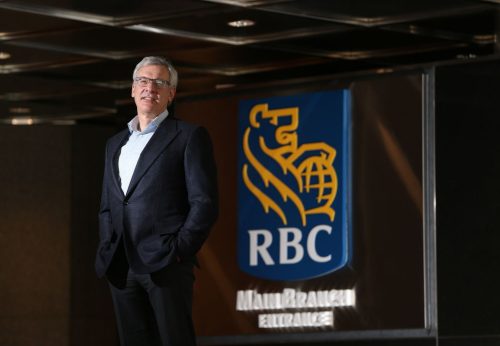Royal Bank of Canada reported record third-quarter earnings, though results also pointed to mounting stress in its mortgage portfolio.
The bank reported adjusted net income of $5.5 billion in the quarter ended July 31. Reported net income rose 21% to $5.4 billion, while diluted earnings per share increased to $3.84 from $3.26 a year earlier.
CEO Dave McKay said the results “demonstrate RBC’s relentless, long-term focus on our clients and our commitment to delivering on the bold growth ambitions we laid out at our recent Investor Day.”
RBC Q3 Earnings Highlights at a Glance
- Adjusted met income: $5.5B (+23% QoQ; +17% YoY)
- Adjusted EPS: $3.84
- Provisions for credit losses: $881M (-38% QoQ; +34% YoY)
- Residential mortgages: $418B (+1% QoQ; +3% YoY)
- Mortgage delinquencies (90+ days): 0.31% (+1 bp QoQ; +7 bps YoY)
- Canadian Banking NIM: 2.61% (+6 bps QoQ; +24 bps YoY)
- CET1 ratio: 13.2% (flat QoQ)
Mortgage growth steady, but impairments rising
Personal banking net income rose 22% to $1.9 billion as the bank’s residential mortgage balances reached $418 billion, up 3% from a year earlier, while home equity lines stood at $38 billion. Net interest margins widened to 2.61%, up 24 basis points year-over-year.
The bank saw 90+ day mortgage delinquencies rise to 31 basis points, from 29 bps last quarter and 24 bps a year earlier.
Delinquency rates were especially elevated in the country’s biggest housing markets. In the GTA, the share of mortgages more than 90 days past due has climbed from 27 basis points a year ago to 42 basis points in Q3. In Greater Vancouver, the rate rose from 20 to 27 basis points over the same period.
Provisions for credit losses rose to $881 million in the quarter, up from $659 million a year earlier, reflecting higher impairments in personal and commercial banking. Within the mortgage book, the allowance for credit losses inched higher to 0.16% of balances, compared with 0.15% in Q2 and 0.13% a year ago.
RBC also ended the quarter with a Common Equity Tier 1 ratio of 13.2%, unchanged from Q2 and well above regulatory minimums. It also returned $3.1 billion to shareholders through dividends and buybacks.
Portfolio quality and housing outlook
Even with impairments rising, most borrowers still hold significant equity in their homes. Uninsured mortgages originated in the quarter carried an average loan-to-value ratio of 70%, while the overall portfolio is much lower at 58%. The majority of RBC’s mortgage book (80%) is uninsured.
Fixed-rate loans account for roughly two-thirds of the bank’s residential mortgage balances, while variable-rate mortgages make up the remaining one-third, while the average remaining amortization is 19 years, down from 21 a year ago.
RBC’s base forecast assumes housing prices will rise 0.8% over the next 12 months and grow at a 3.5% annual pace in the following two to five years.
Visited 167 times, 167 visit(s) today
bank earnings big banks Dave McKay quarterly earnings rbc rbc amortizations RBC earnings RBC quarterly earnings Royal Bank
Last modified: August 27, 2025
